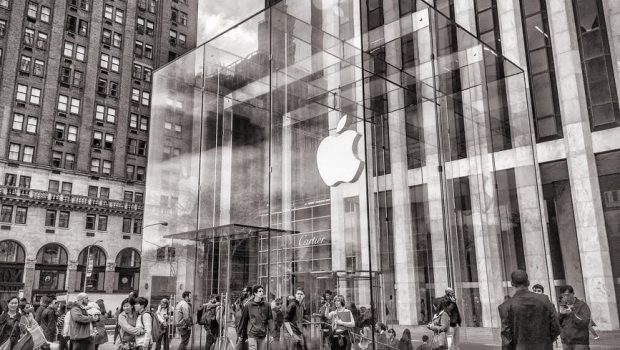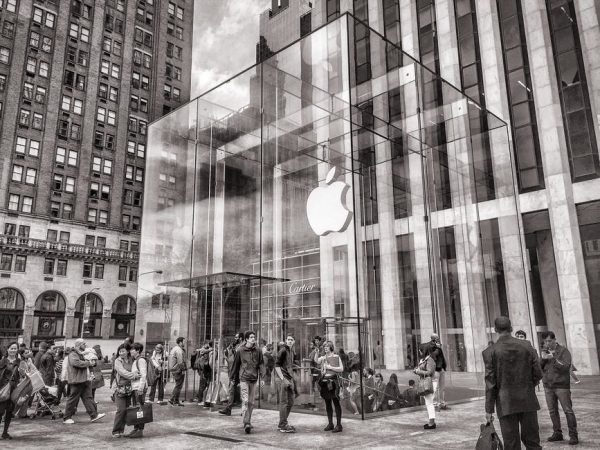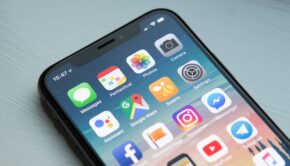Apple’s Business Strategy – It’s Not a Winner
When Steve Jobs returned to Apple in the 90’s, the company was in clear distress. Apple computers were seen as dinosaurs, overtaken by sleeker, more innovative models from a growing list of competitors.
Once Jobs was at the helm again, it became all about devices – coming up with new ones that would meet the emerging lifestyles of people who would love them. Thus, the laptop, the iPod, the iPad, and, ultimately the iPhone. Jobs was a visionary, to be sure. He had a great grasp of what people would want in the near future, and he set his team about the business of providing those products. And as product after product was rolled out, Apple became one of the most valuable enterprises on the planet. Who can forget the widely-televised launch of the first iPhone, with Jobs on stage, telling us all how the way we use phones was going to be transformed.
The iDevices – Perfectly Suited to Apple’s Brand
To produce these new i-Products, Apple did not have to get into major technology transformations. It simply had to use current technology and adapt it in new ways. And that kept Apple on top for years.
Enter New Technologies
While Apple has spent its time on new and better devices with an ever-increasing number of new features, other tech enterprises have spent their time on developing new technologies – cognitive computing and the cloud, for example. These require deep research and technological advances that Apple has not invested in. Rather, it has settled into products rather than technology, and that may be the reason why it will not continue to flourish.
A “Closed” Environment
Tim Cook, current Apple CEO, keeps innovations at Apple very “close to the vest.” While Microsoft and IBM are collaborating with academia, a much more open environment, Cook prefers to stay “in-house,” focusing on product development. But the technology advances come from top researchers who publish and collaborate. This is not a strategy that Apple has embraced. Microsoft and IBM, however, have, and they have become leaders in the new world of information and cognitive technology, working with the best and the brightest researchers in a much more open environment.
Consider, for example, just the field of artificial intelligence. Google has TensorFlow, a library of machine learning tools. Microsoft has CNTK and Facebook has Torch. IBM has Watson, and has embraced open-source contributions that significantly increase its capabilities. By teaming up with top researchers, these enterprises have locked into the latest technologies and continue to provide innovations that people and companies embrace.
In the realm of cloud technologies, the same players are involved. Microsoft has its Azure and IBM its Bluemix. And both integrate competing services, so that customers have a full ecosystem of services. This is not a business strategy that Apple has ever embraced.
Can Apple Flourish in the Device Market?
Each time a new iPhone is launched, customers line up to purchase it. The latest, iPhone X, has some truly great new features, such as Face ID instead of a password, animoji’s, and a portrait feature that allows changing backgrounds and lighting on “selfies.” And navigating among apps and such has become much more seamless. There have also been improvements made to Siri, Apple’s personal assistant. Is this enough to keep Apple the leading device product supplier? Only time will tell, because, overall, sales of iPhones have been down. And the Apple watch has certainly not been the “winner” that Apple imagined.
But Tim Cook is making moves in the direction of technology. Years ago, Apple and IBM saw themselves as major competitors in the computer industry. Over time, however, each carved out their own space – IBM focusing on corporate clients and Apple focusing on personal computing. They both went through a period of malaise when Microsoft and Intel formed an alliance and began to dominate the PC market. Eventually, they re-emerged in their old missions – Apple with its personal devices and IBM with its corporate services of data.
In 2014, Apple and IBM began a cooperative venture in which could make use of the other’s strengths. It allows IBM to serve its clients better through devices and interfaces, and Apple to gain access to data and sales capabilities. This positions both enterprises into a market that consists of platforms, devices, ecosystems, and networks, and that is probably a good thing for both.
The Strategy of “Lock-In”- Can It Survive?
Still, Apple is wedded to its devices, and that is where its focus remains. And its strategy in this respect has been one of “locking in” its ecosystem. Customers store their iPhone photos in the Apple cloud, they fill their iPhones with apps from the Apple store; they download and store their music from iTunes. Once that happens, it becomes less and less likely that the customer will abandon Apple for Android devices. Instead, they will continue to purchase the new device models as they arrive.
And Apple has been very aggressive with lawsuits – launching them against any competitor who develops smartphone features that are similar. While Apple has had successful judgements again its competitors, this will not last forever, because technology and innovation march on. Android users may not have Siri, for example, but they do have Google’s assistant which offers most everything the average consumes wants. They may not have Apple’s technology for translating into a foreign language, but Google translate works well.
What very well may happen is that Apple will price itself out of the market. And as it loses its ability to sue its way to a “monopoly,” consumers may well abandon it for cheaper Android devices with the same features. Face recognition technology is not “owned” by Apple, for example, and it is hard to see how a lawsuit could prevent a competitor like Samsung from offering it as well.
The Overriding Business Strategy May Kill the Brand
And so, what has really changed with Apple’s business strategy? Not much. While its singular collaboration with IBM signals somewhat of a move, the overriding strategy remains the same:
- Develop a cult-like ecosystem around its devices.
- Improve and enhance existing technology to produce new devices on a regular basis, and provide lots of hype around them
- “Imprison” consumers through those iDevices, iCloud storage, iTunes, and the Apple app store, so that they will not want the cost or the hassle of making a change to a cheaper ecosystem like Android.
- Sue competitors when possible to prevent the “copying” of features.
The strategy has worked for years. The problem Apple faces from now on, however, is that research, innovation, and new technological advances are now the result of open collaborative groups of individuals who share with one another. In that sharing, they may indeed out-feature Apple, and with technology that crosses all devices other than Apple. As this happens, consumers looking for less expensive options may very well pull Apple off of its “throne.” Nothing lasts forever.
About the author:
Dina Indelicato is a blogger enthusiast and freelance writer. She is always open to research about new topics and gain new experiences to share with her readers. You can find her on Twitter @DinaIndelicato and Facebook.
















